|
|
|---|
Vortex Bee Escape Board
A slightly more complex, but more effective version of the Triangle Escape Board.
|
|
Vortex Bee Escape BoardA slightly more complex, but more effective version of the Triangle Escape Board. |
|---|
At first sight this design may seem complicated, but the three shaped parts are repeated three times and all angles are 30 degrees, 60 degrees or multiples thereof. The layout of parts is shown in this diagram.
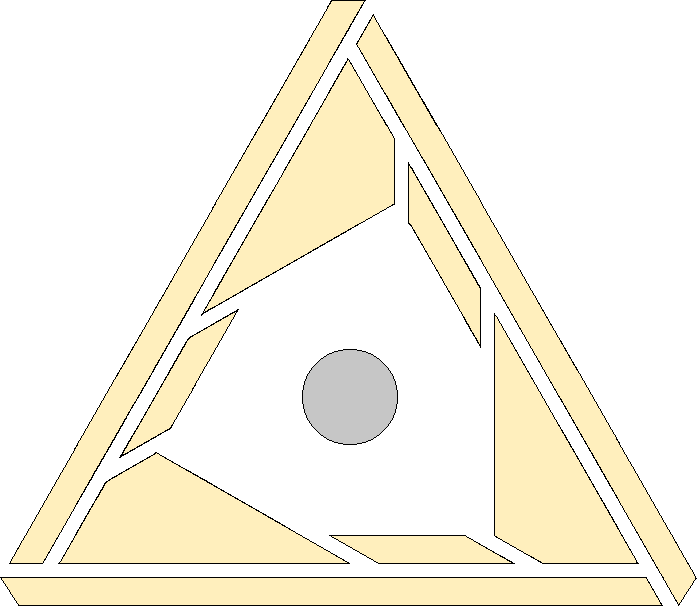
All parts are 9 mm exterior grade plywood... The outer three parts are 18 mm wide and 260 mm long with 60 degree ends. The three small parts are 18 mm wide with 30 degree ends. The long side of the triangle is 100 mm. All gaps are 9 mm wide and are controlled during assembly using a scrap strip of 9 mm ply as a spacer. The central hole is 33 mm or 38 mm or 44 mm (according to what cutters you have available).
The shaped parts are glued, pinned or screwed to the underside of a 9 mm exterior grade plywood plate (hive sized). Then 8 mesh (hardware cloth in US) is cut and stapled in place... Finally three unwanted CD Roms are drilled, countersunk and screwed in place over the corners (shiny side outwards).
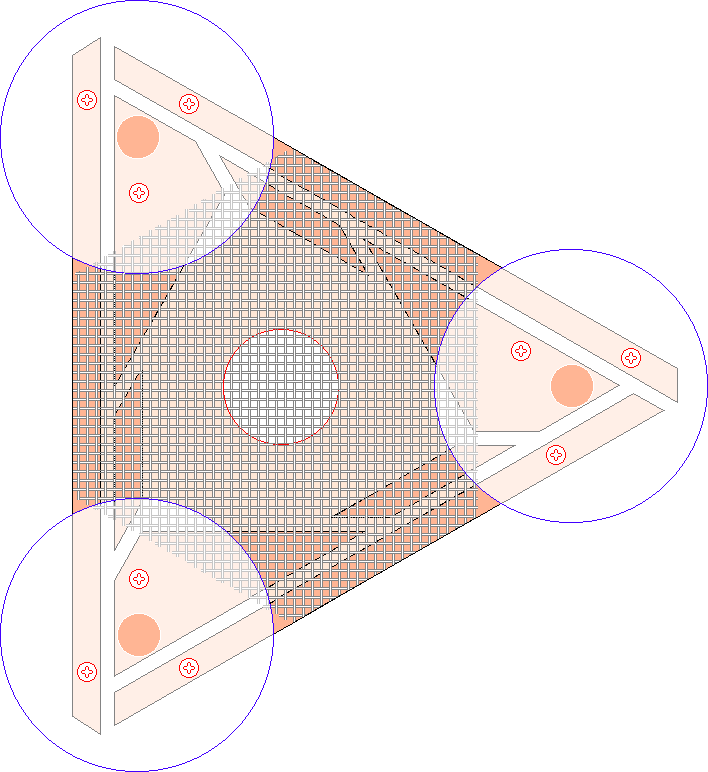
The action is similar to any other 'Canadian' style escape board, but the shape and layout of the parts causes much more of a 'one way' swirling action as is indicated in the flow diagram below.
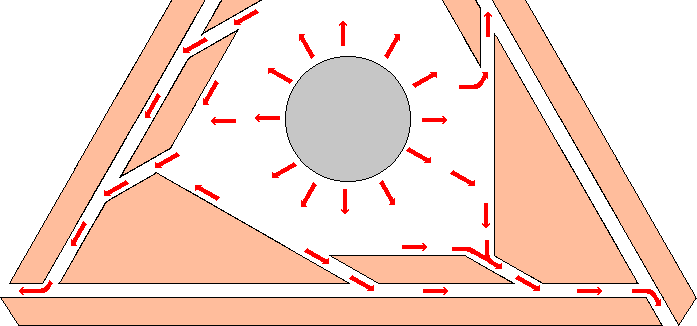
|
There is no 'guarantee' that the bees will always take the shallow angle rather than the acute one, but even if they do it only leads them to the next exit. This gives a very rapid and smooth outflow of bees (almost stampede proportions). There are several aspects that inhibit 'reverse flow'. First the shape of all junctions in the flow promote outward traffic and make inward travel more difficult. The shiny CD Roms stop the bees clustering at the corners and blocking the exits (any clustering bees fall off the shiny surface), they also provide a baffle between outgoing and bees and those attempting the return journey. The action of the escape is so strong that a more or less continuous stream of bees is coming outwards so there is no opportunity for bees to enter the exit nozzles. There is a further dilution of incoming bees due to the shape of the exit deflecting bees to one side or the other and finally even if a bee gets in an exit there is more than a 50% chance that it merely comes out of the next exit. This latter action is illustrated in the diagram below. |
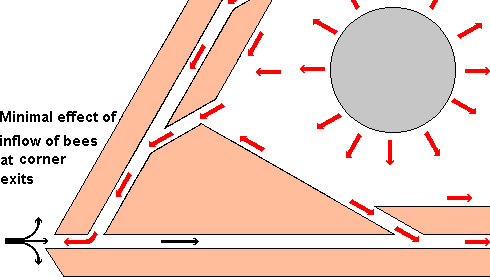
Only one prototype of this board was made (in 1994 at Apex Enterprises) the baffles on the corners of the original were squares of polished aluminium (the CDs are indicated as they are surplus from computer magazine covers... As a beekeeper I never waste anything and I suspect many other beekeepers are skinflints like me).
When the original was tested an estimated 90% of bees were removed in 15-18 minutes. The slightly greater complication and cost of manufacture of this device would be offset by the ability to pull supers at one visit.
This is for ease of cutting the mesh and the escape is sized so that one piece on mesh intended for use with an open mesh National sized floor can be cut into four equal pieces and used to make four individual escape boards. It uses more mesh than the triangular version, but cutting the mesh across strands is easier than cutting the hexagon shaped pieces required for the triangular version. Roger has used a pencil to space the parts, in a similar way to my scrap strip of ply. The drawing at right is shown without the mesh in place and showing a pencil in use controlling the spacing of parts during assembly. Two of Roger's sketches have been re-drawn as .gifs of very small file size and are shown below, the dimensions are in mm apart from the exit hole which has Imperial dimensions. The external size of the complete board should be the same as whatever hive type you are using (for National this will be 460 mm x 460 mm). All the parts for either the triangular or square versions can easily be cut using an inexpensive mitre saw (manual or power). | |
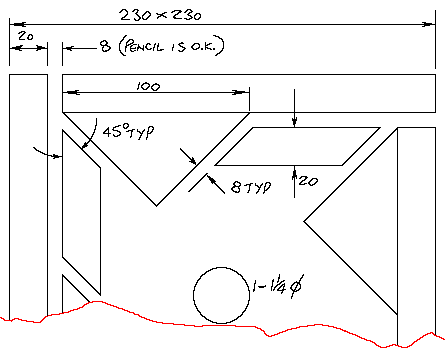
|
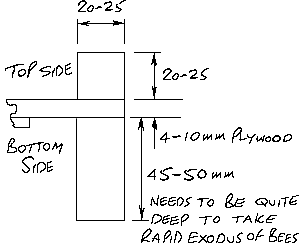
|
|---|---|
|
The Chairman of Roger's Beekeeping association also tried the Roger Patterson version and he comments...
|
Printed from Dave Cushman's website Live CD version